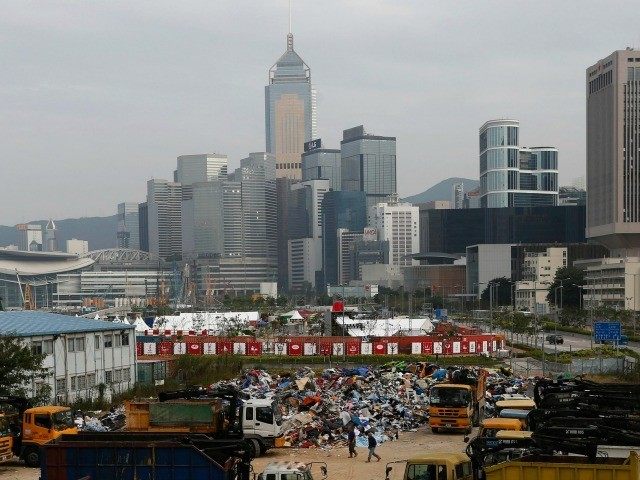The Chinese government has banned mainland residents on the Hong Kong border to travel freely into the autonomous region, limiting their visits to one per week following protests against smugglers triggering a spike in retail prices for Hong Kong residents.
Chinese state news outlet Xinhua reports that the new policy, affecting residents of mainland border town Shenzhen, is a response to Hong Kong government officials’ request to limit the number of visitors from China into Hong Kong. The ruling, a government spokesman is quoted as saying, “reflects the central government’s consideration for people’s livelihood in Hong Kong.”
Xinhua claims the policy is a reaction to “a boom in mainland tourists [which] had put a strain on Hong Kong’s accommodation capacity.” But a related article notes that bona fide tourism actually fell for the Chinese new year in 2015, and that the real strain on Hong Kong’s economy is an artificial rise in prices triggered by heavy smuggling of products difficult to acquire in mainland communist China out of Hong Kong.
The Guardian notes that, while tourism numbers were down in 2015, 47 million Chinese visitors entered Hong Kong in 2014– six times the population of Hong Kong. The New York Times adds that many calling for mainland China to loosen its grip on Hong Kong in last year’s Occupy Central protests had specifically protested that they were forced to pay inflated prices for household items because of smuggling. Some of those have expressed relief that trips by mainlanders to Hong Kong have been reduced.
“This shows that our voice can make a difference,” Andy Yung Wai-yip, a participant in the protests, told the New York Times, adding that he was less “pessimistic” about Hong Kong’s political situation in light of the change.
While the Chinese government removed the base of the Occupy Central protests in December, protesters continued to stage marches and manifestations against a number of mainland Chinese policies aside from the original issue prompting the Hong Kong protest movement: an announcement that Beijing would have to vet and clear any candidates for Hong Kong public office before they went on the ballot.
The largest and most violent of these protests occurred in March, when a group of Hong Kong residents stormed shops that catered to mainland Chinese visitors chanting “topple the Chinese Communist Party.” The protest specifically targeted smugglers, known otherwise by the euphemism “parallel trader,” resulting in 38 arrests after police used tear gas and batons to hold back the crowd. Videos released of the protest showed graphic violence on the part of law enforcement, with one particularly stark video showing a woman holding her bleeding face.

COMMENTS
Please let us know if you're having issues with commenting.